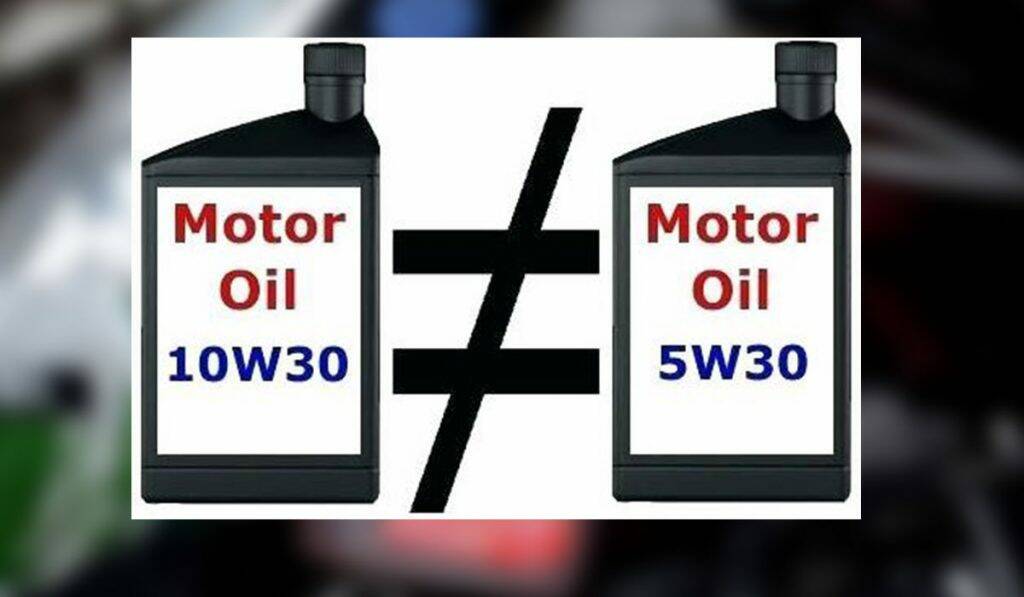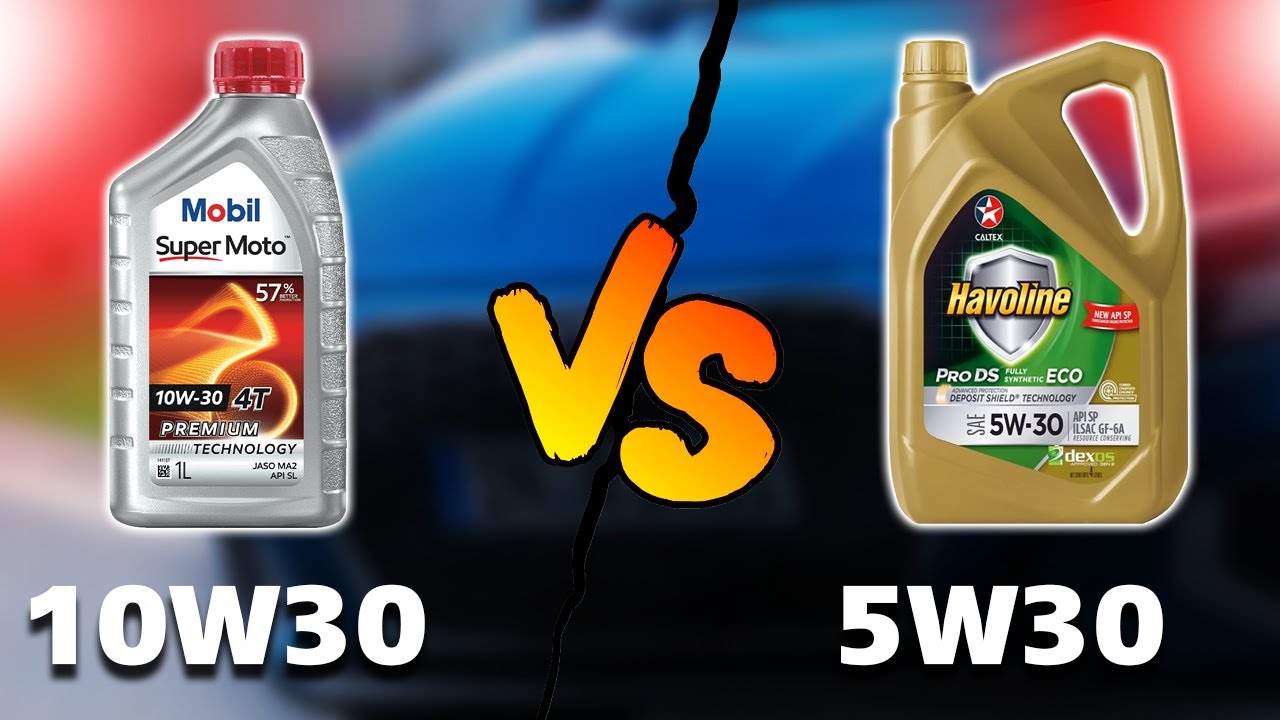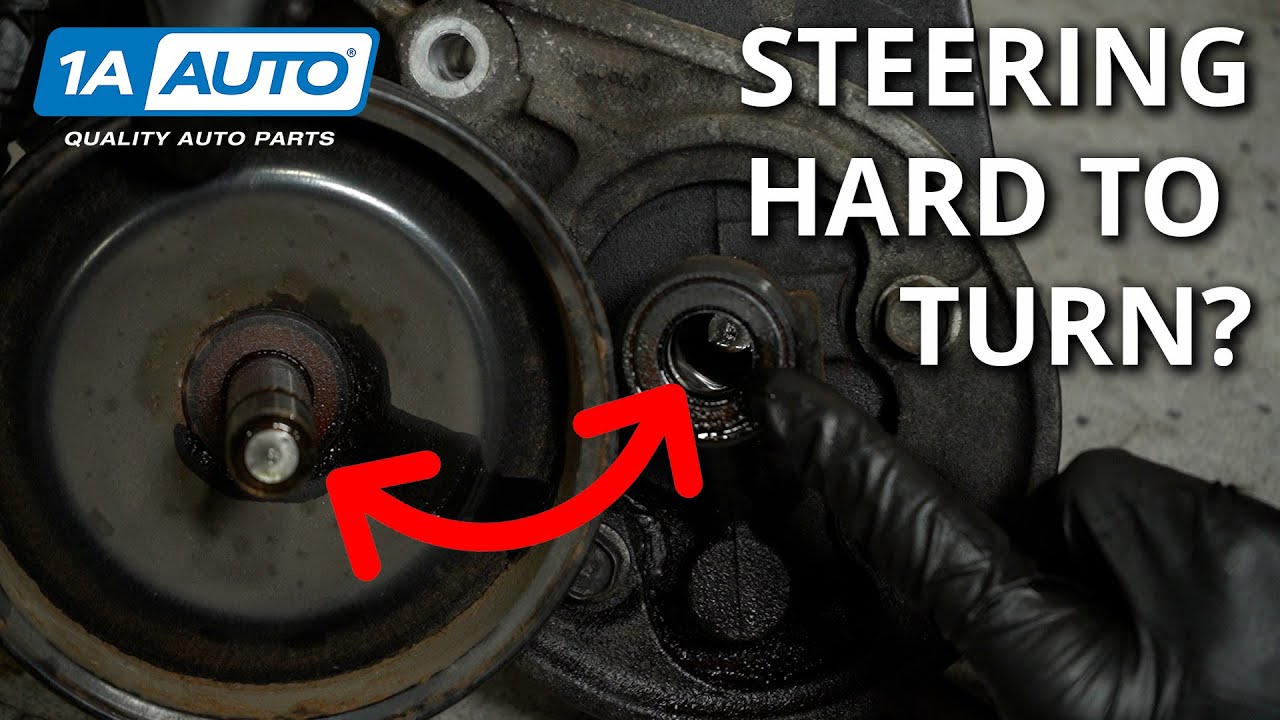Have you ever found yourself in a pinch, low on motor oil, and with only two partially used bottles in your garage – one with 10w30 and the other with 5w30? Or maybe you accidentally grabbed the wrong bottle at the store and now wonder if mixing the two viscosities is safe. Well, the answer isn’t quite as simple as a yes or no.
It is possible to combine 5W-30 and 10W-30 engine oil, but it isn’t necessarily the best option. These two oils have different viscosities, which can influence their flow rate, but not significantly enough to cause any damage to your engine. To ensure the efficient mixing of these oils, it’s advisable to use specific oil additives.
Get ready to become an oil-mixing expert! In this guide, we’ll show you the right way to mix two types of motor oils – like 10w30 and 5w30 – so that your car runs optimally. Don’t delay; keep reading now for more tips and tricks!
What Is Meant by 5w30 or 10w30 Oils?
What is meant by 10w30 and 5w30?The Society of Automotive Engineers (SAE) created a viscosity scale to measure engine oil viscosity accurately. The range begins with 0W, representing the thinnest type available, and culminates in 60–the thickest oil possible.
- When you spot the letter “W” on the motor oil label, it indicates that this type of oil has been formulated for wintertime use.
- The numerical values displayed refer specifically to viscosity levels in various temperatures, ensuring your engine runs optimally even when cold weather strikes.
- The first number (5 or 10) in 5w30 and 10w30 is the viscosity of the oil rated at 5w or 10w in winter, which refers to how quickly the oil will flow at cold temperatures.
- The second number (30) is the viscosity of oil, rated at 30 in summer, and it refers to how quickly the oil will flow at high temperatures.
Is It Acceptable to Mix 5w30 and 10w30 Oil Together?
If you’re thinking of combining 10w30 and 5w30, the answer is a resounding “yes”! While it might seem unwise at first glance, rest assured that these two oils have similar viscosity grades when temperature levels are considered. Therefore, this blend will not cause any serious harm to your engine – provided they both follow the same API standards!
As the cold winter months arrive, don’t forget that engine oils of similar weight can vary drastically when it comes to viscosity. Thinner oil will flow more easily than other thicker options. Hence, it’s better to pick the one that is recommended in your car’s manual or by a knowledgeable mechanic to ensure optimal performance and smooth operation of your automobile.
What Makes 5W30 Oil Different From 10W30 Oil?
What is the Difference Between 5w30 and 10w30?5W30 and 10W30 oil are not the same, particularly when it comes to their viscosity in lower temperatures. The smaller number preceding the W means a much lighter weight of that particular oil, causing it to flow quicker than heavier options.
5w30 grade oil and 10w30 grade oil both have the same viscosity when heated to 100 degrees Celsius, but 5w30 thickens less in cold climates. This implies that it is better suited for lower temperatures due to its fluid consistency even at low temperatures, allowing optimal engine lubrication. On the other hand, 10w30 has a higher temperature window with greater effectiveness at high temperatures.
Does Combining 5W30 with 10W30 Affect Your Car Engine?
Combining 10w30 and 5w30 may not damage your vehicle, but it will come at a cost. This mixture of the two oil types results in a texture that is mostly like 10w30 without providing you with any additional benefits from using 5w30 specifically. So while there may be no harm done to your car, you won’t receive the full advantages of using one type over another.
Rest assured, your engine will still remain in perfect condition with no harm caused. The only possible consequence is that you could forfeit your vehicle’s warranty coverage if you choose to use an oil mix than what is indicated in the car manual (e.g., 5W30 or 10W30). But don’t worry – this stipulation may not have much bearing on you at all if the manufacturer’s warranty has already run out!
How to Mix Two Different Types of Oil? – 5w30 and 10w30

Combining any two oils – no matter their type or viscosity – will decrease the performance of your engine and shorten oil-change intervals if not mixed properly. That’s because they won’t mix properly; this means your motor won’t get the most out of either variant.
To ensure optimum results when blending oils, choose oils with similar weights that will stream together seamlessly. Remember these key tips:
Never Mix Synthetic and Conventional Oils
It is paramount that you never blend synthetic and conventional oils together. As the names suggest, synthetic oil is synthesized artificially, whereas conventional oil is extracted from crude sources. This difference means that mixing them could result in a ‘gummed-up’ situation which will be detrimental to your motor and its functioning parts.
Mix the Oils of Similar Weight
Smoother engine performance is guaranteed with the usage of oils that share a similar weight. For mixing, you must choose either light or heavy oil – not a combination of the two. If you mix significantly different weights together, your car won’t drive as efficiently as it should, and this could lead to further mechanical issues later on down the line. It’s essential for optimal functioning that both types of oils are in alignment!
Make Sure Oil Is Compatible With the Current Season
Before mixing them, ensure you carefully assess if each oil is suited for the current season to safeguard your engine from any possible harm. If you choose to proceed with blending them, ensure that both 5W30 and 10W30 oils are from the same manufacturer. The 5W30 will thicken less when cold while providing easy flow towards the upper ends; conversely, the 10W30 was created especially for engines carrying heavier loads, so it thickens more when cold.
Always Use Oil Additive Before Mixing
Oil additives are designed to mix two kinds of oils, aiding the heavier fluid to flow more quickly in your system and blending easily with lighter oil. Not only that, but they also provide extra protection from wear and tear for your engine! Made using synthetic materials specifically crafted for this purpose, these additives can be invaluable when it comes to maintaining a healthy car or machine.
To preserve the safety and efficacy of your engine, it is essential to use a motor oil additive that precisely corresponds with the kind of oil you are utilizing. For instance, if you have chosen synthetic oil as your lubricant source, then select an additive for synthetics; or conversely.
If mineral-based oils are being used in your automobile system- ensure that a compatible mineralized additive is included in your maintenance routine. The wrong type of additive could potentially cause serious damage to the engine involved.
Pour the Lighter-Weight Oil First
For a perfectly blended oil mix, begin by pouring the lighter-weight 5w30 oil into the engine. Follow this up with a layer of heavier-weighted lubricant 10w30 on top in order to properly combine and homogenize both oils. Finally, start up the engine and let it run for several minutes so you can assess how well they are mixing together while also ensuring everything performs optimally.
Ensure You Check the Oil Level at the End
After blending the two oils, make sure to examine your vehicle’s oil level. After driving for a bit and stopping again, inspect the amount of oil in the reservoir. If you find that there isn’t enough weight inside it according to your manufacturer’s instructions, mix more oil until you reach its recommended level.
Avoid an Oil Leak at All Costs!
Avoid spilling oil when mixing, as this will most likely result in a pungent burning scent venting through your car. If this does happen, immediately turn off your car and take it to a garage for an oil change as soon as possible.
Conclusion
Whenever you’re debating mixing two distinct types of oils (for example, 5W30 and 10W30), the smartest move is to follow your automobile’s manufacturer’s advice. Bear in mind that various autos have different needs—so make sure you use the suitable viscosity rating and oil for your engine! This will ensure optimal results from your vehicle’s motor. Best of luck!





If you can’t mix synthetic oil and conventional oil, then what is synthetic blend? Synthetic oil and conventional oil are compatible with each other!